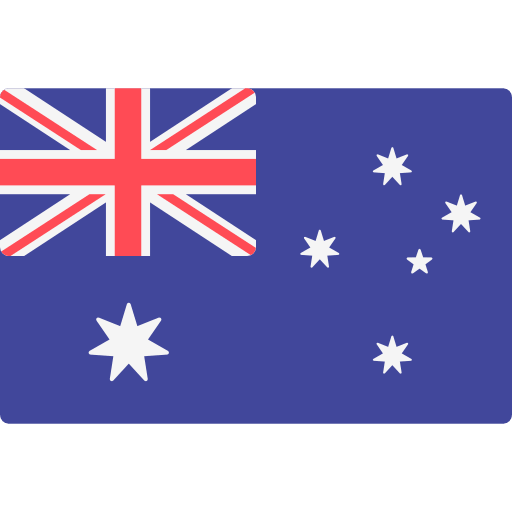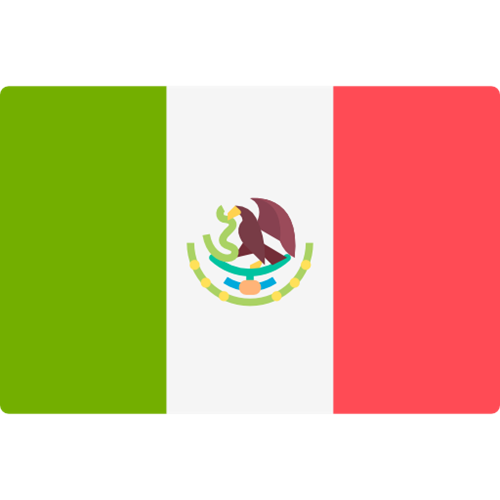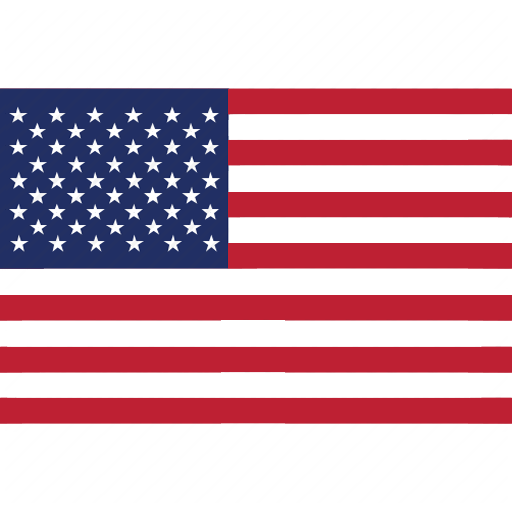Chemicals | Monthly bulletin | June 2025


ECHA's guidelines on the measurement of formaldehyde releases
On the 14th of May 2025, the European Chemical Agency (ECHA) published the guidelines for the measurement of formaldehyde releases from articles and formaldehyde concentrations in vehicle interiors.
These guidelines aim to help to comply with the Entry 77 to Annex XVII (REACH), Regulation 2023/1464, which sets the limit value for formaldehyde emissions.
The guidelines include:
- Descriptions of appropriate test methods to measure formaldehyde emissions from articles and formaldehyde concentrations in vehicles interiors and examples of data obtained using these methods.
- Clarifications on the reference conditions listed in Appendix 14 and additional factors that may affect test results.
- Correlation of results obtained by testing under other reference conditions.
For more information, consult the guidelines on the ECHA‘s website here.
Proposal on chromium (VI) substances restriction
On the 29th of April 2025, ECHA published news relating to a proposal for an EU-wide restriction on certain hexavalent chromium, Cr(VI), substances.
The European Commission requested this proposal with the aim of reducing the harmful effects of these substances for both workers and the public.
ECHA proposes to introduce a ban and restrictions on Cr(VI) substances, except in the following use categories when they meet defined limits for worker exposure and environmental emissions:
- Formulation of mixtures
- Electroplating on plastic substrate
- Electroplating on metal substrate
- Use of primers and other slurries
- Other surface treatment
- Functional additives/process aids
On the 18th of June 2025, it is expected to start a consultation for six-months.
For more information, consult the ECHA’s website here.
Recent publications on REACH Regulation
The following table provides a non-exhaustive summary of some recent updates regarding REACH Regulation (EC) No 1907/2006:
|
Summary of the most recent updates |
||
|
Date |
Subject |
Link |
|
14/05/2025 |
ECHA published the updated catalogue of bordelone cases between articles and substances/mixtures. It helps the user to determine if an object is an article according to REACH. The cases assessed are based on questions received by national helpdesks and ECHA. |
For more information, consult the ECHA’s website here. |
|
21/05/2025 |
ECHA updated the practical guide ‘How to act in dossier evaluation’. It explains in simple terms the duties regarding the content of the registration dossier and how the dossier is processed under dossier evaluation. The aim of this guide is to;
|
For more information, consult the ECHA’s website here. |
|
21/05/2025 |
ECHA has a new activity under Packaging and Packaging Waste regulation (PPWR). ECHA will support the European Commission by:
|
For more information, consult the ECHA’s website here. |
Interesting resources on REACH Regulation on the ECHA’s website
- Registry of restriction intentions until outcome - ECHA (europa.eu)
- Registry of SVHC intentions until outcome - ECHA (europa.eu)
- Substance evaluation - CoRAP - ECHA (europa.eu)
- Adopted opinions and previous consultations on applications for authorisation - ECHA (europa.eu)
- Applications for authorisation - current consultations - ECHA (europa.eu)
- Current calls for comments and evidence - ECHA (europa.eu)
- Authorisation List - ECHA (europa.eu)
- ECHA's completed activities on restriction
- Submitted restrictions under consideration
- Assessment of regulatory needs list
Interesting resources on the CLP Regulation on the ECHA’s website
- Registry of CLH intentions until outcome - ECHA (europa.eu)
- Harmonised classification and labelling consultations - ECHA (europa.eu)
European initiatives related to persistent organic and chemical pollutants
The table below summarises recent publications on European Commission initiatives and their status regarding:
|
Date |
Title |
|
05/05/2025 |
Persistent organic pollutants - UV-328 This initiative aims to add UV-328 to Annex I of the POP Regulation (EU) 2019/1021 as a substance subject to certain restrictions. The status is that the European Commission adopted the draft act. |
|
05/05/2025 |
Chemical pollutants – limits and exemptions for perfluorooctanoic acid (PFOA) This measure will postpone the date of the ban for fire-fighting foams and propose new concentration limits as an unintentional trace contaminant. The status is that the European Commission adopted the draft act. |
New amendment for UK persistent organic pollutants regulation
On the 20th of May 2025, the Persistent Organic Pollutants (Amendment) (No. 3) Regulations 2025 (S.I. 2025 No. 605) was published. It modifies the table in Part A of Annex 1 of Regulation (EU) 2019/1021 of the European Parliament and of the Council on persistent organic pollutants (recast) (S.I. 2019 No. 1021) by removing the entries for Dechlorane Plus and UV-328.
The amendments entered into force on the 21st of May 2025.
EPA Delays PFAS Reporting Start Date Under TSCA Section 8(a)(7)
On May 13, 2025, the U.S. Environmental Protection Agency (EPA) published an interim final rule postponing the commencement of the reporting period for per- and polyfluoroalkyl substances (PFAS) under Section 8(a)(7) of the Toxic Substances Control Act (TSCA). Originally slated to begin on July 11, 2025, the reporting period will now start on April 13, 2026, and conclude on October 13, 2026. For small manufacturers reporting exclusively as article importers, the deadline is extended to April 13, 2027.
Reasons for the Delay
The EPA cited the need for additional time to develop and test the electronic reporting tool that will collect the required data. Recognizing challenges users have faced with other TSCA reporting applications, the agency emphasized the importance of ensuring the new system functions effectively before the reporting period begins. This delay also allows for stakeholder engagement in testing the application, ensuring it meets the intended data collection requirements.
Scope of the Reporting Rule
Under the finalized rule from October 2023, any entity that has manufactured (including imported) PFAS or PFAS-containing articles for commercial purposes in any year from 2011 through 2022 is required to report information to the EPA. This includes data on manufacturing, use, disposal, byproducts, worker exposures, and environmental and health effects of those PFAS.
Public Comment Period
While the delay is effective immediately, the EPA is accepting public comments on this interim final rule for 30 days. Additionally, the agency is considering reopening other aspects of the rule for public comment, aiming to address any submitted feedback concurrently.
Massachusetts Finalizes Flame Retardant Regulation: 310 CMR 78.00
On May 9, 2025, the Massachusetts Department of Environmental Protection (MassDEP) finalized regulation 310 CMR 78.00, titled "Ban of Covered Products Containing Certain Flame Retardants." This regulation prohibits the sale, distribution, or importation into Massachusetts of specified consumer products containing certain chemical flame retardants exceeding 1,000 parts per million (ppm) in any component part.
Background
The regulation implements provisions of the 2020 law, An Act to Protect Children, Families, and Firefighters from Harmful Flame Retardants (Chapter 261 of the Acts of 2020). This law was enacted to reduce exposure to toxic flame retardants, which have been linked to adverse health effects, including endocrine disruption and cancer.
Covered Products
The regulation applies to the following categories of products:
- Bedding
- Carpeting
- Children's products
- Residential upholstered furniture
- Window treatments
These products are prohibited from containing any of the specified flame retardants above the 1,000 ppm threshold.
Prohibited Flame Retardants
The regulation bans the following 11 flame retardant chemicals and their analogues:
- Tris(1,3-dichloro-2-propyl) phosphate (TDCPP)
- Tris(2-chloroethyl) phosphate (TCEP)
- Antimony trioxide
- Hexabromocyclododecane (HBCD)
- Bis(2-ethylhexyl)-3,4,5,6-tetrabromophthalate (TBPH)
- 2-ethylhexyl-2,3,4,5-tetrabromobenzoate (TBB)
- Chlorinated paraffins
- Tris(1-chloro-2-propyl) phosphate (TCPP)
- Pentabromodiphenyl ether (PentaBDE)
- Octabromodiphenyl ether (OctaBDE)
- Tetrabromobisphenol A (TBBPA)
Macau bans the import and export of POPs convention regulated substances
In March 2025, the Macau Environment Protection Bureau notified the WTO that on the 21st of October 2024, the local regulation Chief Executive's Decision No. 168/2024 has banned the import, export and transshipment of Persistent Organic Pollutants (POPs) regulated substances to the Macao Special Administrative Region.
Any chemicals listed in Annex I and goods listed in Annex II of the Stockholm Convention on the import, export, and transshipment of POPs to the Macao Special Administrative Region is forbidden.
The prohibition does not apply to chemical substances intended for use in laboratory research or to serve as reference standards.
The following goods and their reference codes according to the Nomenclature for External Trade of Macau/Harmonized System (NCEM/HS, 7th Revision) are excluded from Group G of Table A (export table) attached to the Dispatch of the Chief Executive No. 188/2022:
- Hexabromocyclododecane <ex.2903.89.30>;
- Polychlorinated biphenyls (PCBs) <2903.99.10>;
- Hexabromobiphenyls included in polybrominated biphenyls <2903.94.00>;
- Perfluorooctane sulfonic acid and its salts, and perfluorooctane sulfonic fluoride, including:
- Mixtures and preparations containing polychlorinated biphenyls (PCBs), polychlorinated terphenyls (PCTs) or polybrominated biphenyls (PBBs) <3824.82.00>;
- Mixtures and preparations containing perfluorooctane sulfonic acid, its salts, perfluorooctane sulfonamides or perfluorooctane sulfonyl fluoride <3824.87.00>.
The following goods and their reference codes according to the Nomenclature for External Trade of Macau/Harmonized System (NCEM/HS, 7th Revision) are excluded from Group G of Table B (import table) attached to the Dispatch of the Chief Executive No. 188/2022:
- Mixtures and preparations containing polychlorinated biphenyls (PCBs), polychlorinated terphenyls (PCTs) or polybrominated biphenyls (PBBs) <3824.82.00>;
- Mixtures and preparations containing perfluorooctane sulfonic acid, its salts, perfluorooctane sulfonamides or perfluorooctane sulfonyl fluoride <3824.87.00>.
The Regulation has been effective since the 21st of October 2024.
The revision of the CNS 15030 standards to align with the GHS 8th revision
On February 24th, 2025, the Taiwan BSMI (Bureau of Standards, Metrology, and Inspection) announced the completion of revisions and creations for all 30 parts of the CNS 15030 series standards.
To align with the Globally Harmonized System of Classification and Labelling of Chemicals (GHS) 8th revision, the BSMI started the comprehensive revision of the CNS 15030 standard in 2024.
The CNS 15030 series of standards, covering 1 general principle and 29 sub-standards, including 17 physical hazards, 10 health hazards and 2 environmental hazards barriers to trade, NTB), refer to Table 1 to summarise the new and revised Chinese and English lists of 30 national standards in the CNS 15030 series.
In Taiwan, hazardous chemicals, toxic chemicals, and chemicals of concern must be classified and labelled according to the CNS 15030 series of national standards, in compliance with the “Toxic and Concerned Chemical Substances Control Act” and the “Occupational Safety and Health Act” and their subordinate regulations.
In line with the new revision of the CNS 15030 series of standards, the inter-ministerial committee, including the competent authorities for chemical safety purposes such as labour, environment, agriculture, and fire protection, will coordinate and initiate the update of relevant supporting regulations, including the "Rules for the Labelling and General Knowledge of Hazardous Chemicals", "Rules for Occupational Safety and Health Facilities", "Measures for the Administration of Pesticide Labelling" and "Law on the Management of Toxic and Concerned Chemical Substances".
For more information about the content or amendments of the CNS 15030 standard, please refer to the official announcement by the Bureau of Standards, Metrology and Metrology of the Ministry of Economic Affairs.
CNS 15030 national standard 2024-2025 completed a new revision of the table summary (see highlighted)
|
Standard code |
Standard Title |
|
CNS15030-2025 |
Classification and labelling of chemicals − General rules |
|
CNS 15030-1-2024 |
Classification and labelling of chemicals − Explosives |
|
CNS 15030-2-2024 |
Classification and labelling of chemicals − Flammable gases |
|
CNS 15030-3-2024 |
Classification and labelling of chemicals − Aerosols and chemicals under pressure |
|
CNS 15030-4-2024 |
Classification and labelling of chemicals − Oxidizing gases |
|
CNS 15030-5-2024 |
Classification and labelling of chemicals − Gases under pressure |
|
CNS 15030-6-2015 |
Classification and labelling of chemicals − Flammable liquids |
|
CNS 15030-7-2024 |
Classification and labelling of chemicals − Flammable solids |
|
CNS 15030-8-2008 |
Classification and labelling of chemicals - Self-reactive substances and mixtures |
|
CNS 15030-9-2008 |
Classification and labelling of chemicals - Pyrophoric liquids |
|
CNS 15030-10-2008 |
Classification and labelling of chemicals - Pyrophoric solids |
|
CNS 15030-11-2015 |
Classification and labelling of chemicals − Self-heating substances and mixtures |
|
CNS 15030-12-2024 |
Classification and labelling of chemicals − Substances and mixtures which, in contact with water, emit flammable gases |
|
CNS 15030-13-2008 |
Classification and labelling of chemicals - Oxidizing liquids |
|
CNS 15030-14-2024 |
Classification and labelling of chemicals − Oxidizing solids |
|
CNS 15030-15-2024 |
Classification and labelling of chemicals − Organic peroxides |
|
CNS 15030-16-2024 |
Classification and labelling of chemicals − Corrosive to metals |
|
CNS 15030-17-2025 |
Classification and labelling of chemicals – Acute toxicity |
|
CNS 15030-18-2025 |
Classification and labelling of chemicals − Skin corrosion/irritation |
|
CNS 15030-19-2025 |
Classification and labelling of chemicals − Serious eye damage/eye irritation |
|
CNS 15030-20-2025 |
Classification and labelling of chemicals − Respiratory or skin sensitization |
|
CNS 15030-21-2025 |
Classification and labelling of chemicals − Germ cell mutagenicity |
|
CNS 15030-22-2025 |
Classification and labelling of chemicals − Carcinogenicity |
|
CNS 15030-23-2025 |
Classification and labelling of chemicals − Reproductive toxicity |
|
CNS 15030-24-2025 |
Classification and labelling of chemicals − Specific target organ toxicity − Single exposure |
|
CNS 15030-25-2025 |
Classification and labelling of chemicals − Specific target organ toxicity − Repeated exposure |
|
CNS 15030-26-2025 |
Classification and labelling of chemicals − Aspiration hazard |
|
CNS 15030-27-2025 |
Classification and labelling of chemicals − Hazardous to the aquatic environment |
|
CNS 15030-28-2025 |
Classification and labelling of chemicals − Hazardous to the ozone layer |
|
CNS 15030-29-2025 |
Classification and labelling of chemicals − Desensitized explosives |
Sustainability, circular economy and environment
Miscellaneous technical publications relating to environmental, plastics, packaging and waste
The table below summarises the most recent publications regarding sustainability, the circular economy, and the environment (non-exhaustive):
|
Entity |
Date |
Publication |
|
European Commission |
15/04/2025 |
The Ecodesign for Energy-Related Products and Energy Information (Amendment) (Northern Ireland) Regulations 2025 (S.I. 2025 No. 497) These Regulations amend the Ecodesign for Energy-Related Products Regulations 2010 (S.I. 2010/2617) (“the 2010 Regulations”) and the Energy Information Regulation (S.I. 2011/1524) (“the 2011 Regulations”) in order to implement the Windsor Framework. |
|
European Commission |
16/04/2025 |
COMMISSION STAFF WORKING DOCUMENT Implementation of the Ecodesign and Energy Labelling Working Plan 2022-2024 |
|
European Commission |
16/04/2025 |
COMMUNICATION FROM THE COMMISSION Ecodesign for Sustainable Products and Energy Labelling Working Plan 2025-2030 (COM/2025/187 final) |
|
European Commission |
20/05/2025 |
Commission Delegated Decision (EU) 2025/934 of 5 March 2025 amending Decision 2000/532/EC as regards an update of the list of waste in relation to battery-related waste |
|
European Commission |
21/05/2025 |
The European Commission published several proposals related to the Omnibus IV Simplification Package with the aim to cut red tape, reduce costs and modernise EU rules as part the ongoing Single Market Simplification effort. The proposals are:
It is also available here questions and answer on simplification Omnibus IV. |
|
European Commission |
23/05/2025 |
Commission Implementing Regulation (EU) 2025/1093 of 22 May 2025 laying down rules for the application of Regulation (EU) 2023/1115 of the European Parliament and of the Council as regards a list of countries that present a low or high risk of producing relevant commodities for which the relevant products do not comply with Article 3, point (a). |
|
European Commission |
24/05/2025 |
According to the Article 34(5) of EUDR, the Commission is to adopt delegated acts to amend Annex I with regard to the relevant CN codes of relevant products that contain, have been fed with or have been made using relevant commodities. The European Commission published the following draft. |
















































